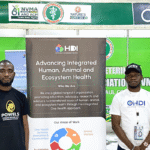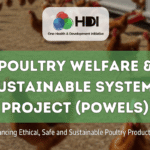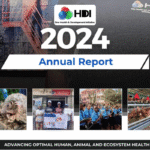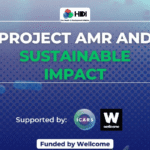Wet Markets: A Food Safety and Public Health Concern
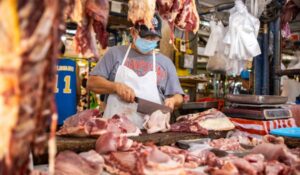
Most people were unfamiliar with the term “wet market” until the COVID-19 pandemic brought it to global attention. A wet market is a marketplace where meat, aquatic food, and live animals are butchered and sold at open-air stalls (Nadimpalli & Pickering, 2020). Animals are often slaughtered on-site, and the meat is hung in the open air without refrigeration. Water and ice are typically used to keep the food and meat fresh. These wet markets have previously been linked to the emergence of several infectious diseases, including Severe Acute Respiratory Syndrome (SARS), H5N1 avian influenza, and more recently, the COVID-19 pandemic (Magouras et al., 2020). Apart from playing a role in these outbreaks, wet markets also carry other health risks. Research has found that food products, especially those from animals and seafood sold in these markets, often contain a high amount of harmful bacteria and other pathogens.
The alarming reality of wet markets
Wet markets are typically open-air spaces where vendors set up stalls in closely packed rows with narrow walkways between them. Animals are usually kept in cages very close to each other, and there is often no division between areas for live animals and meat stalls, allowing customers easy access to both. This setup increases the risk of spreading diseases, as different animals kept close together can easily transmit viruses, which can mutate and become more transmissible between species. The stress animals experience in these crowded, unfamiliar environments weakens their immune systems, further facilitating the spread of diseases.
When animals are slaughtered on-site, the market areas become contaminated with body fluids, waste, and faeces, which not only increases the risk of disease transmission to workers and customers but also to other animals (World Health Organization, 2021). These conditions create the perfect environment for disease-causing organisms to thrive and potentially jump to humans. Poor hygiene, lack of clean water, inadequate waste disposal, and lack of proper regulation, licensing, and record maintenance exacerbate the problem. Additionally, these markets attract scavengers and pests due to overcrowding and poor sanitation, making it easier for diseases to spread and potentially leading to outbreaks of known foodborne diseases and the emergence of novel viruses (Naguib et al., 2021).
Balancing affordability and safety in wet markets
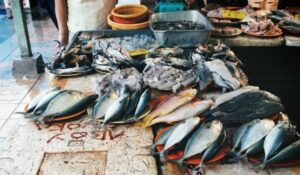 Wet markets are a vital part of society in many Asian countries, especially for low-income groups who rely on them for affordable, fresh food. These markets are popular because they offer freshly slaughtered meat at lower prices and are conveniently located near towns or on the outskirts of cities. In India alone, there are around 4,000 registered slaughterhouses and over 25,000 unregistered ones, reflecting the scale of this market system (NRC Meat, 2015). Wet markets are essential for consumers and provide livelihoods for millions of small and medium businesses, both in urban and rural areas. Despite the rise of supermarkets in Asia, up to 77% of consumers still prefer wet markets as their primary source of fresh food, particularly due to their preference for fresh meat. However, the unsanitary and unhygienic conditions in these markets, combined with high temperatures and humidity, create a perfect environment for the spread of zoonotic diseases.
Wet markets are a vital part of society in many Asian countries, especially for low-income groups who rely on them for affordable, fresh food. These markets are popular because they offer freshly slaughtered meat at lower prices and are conveniently located near towns or on the outskirts of cities. In India alone, there are around 4,000 registered slaughterhouses and over 25,000 unregistered ones, reflecting the scale of this market system (NRC Meat, 2015). Wet markets are essential for consumers and provide livelihoods for millions of small and medium businesses, both in urban and rural areas. Despite the rise of supermarkets in Asia, up to 77% of consumers still prefer wet markets as their primary source of fresh food, particularly due to their preference for fresh meat. However, the unsanitary and unhygienic conditions in these markets, combined with high temperatures and humidity, create a perfect environment for the spread of zoonotic diseases.
What should be done?
While the unsanitary and unhygienic conditions in wet markets pose significant health risks, a blanket ban on these markets is not the solution. Such a ban could drive these markets underground, making it impossible to monitor and regulate them, which could worsen the situation (Webster, 2004). Instead, the focus should be on formalising and regulating wet markets. By improving infrastructure, enforcing hygiene standards, and ensuring proper oversight, the government can help maintain the accessibility and affordability of fresh food while reducing the health risks associated with these markets.
Formalising wet markets would also help protect the livelihoods of millions of people who depend on them, ensuring that this essential part of society can continue to operate safely and sustainably. Additionally, implementing food safety management systems like Hazard Analysis Critical Control Points (HACCP), Good Manufacturing Practices, and good hygiene practices is crucial. A One Health approach, which considers human, animal, and environmental health, should be adopted, along with training for all market actors on basic sanitation, food safety and proper waste disposal.
To conclude, effective inspection systems, traceability, and recall mechanisms must be developed and enforced. Moreover, greater coordination is needed between relevant agencies, such as food safety organizations and municipal bodies, to ensure safe food practices and effectively regulate food outlets (Goyal, 2020). By taking these steps, developing countries can modernize wet markets, making them safer for both consumers and workers.
References
Goyal P. (2020, August 1). Wet Markets and Food Laws in India: What is Needed to Ensure Safety and Hygiene? Economic and Political Weekly. https://www.epw.in/engage/article/wet-markets-and-food-laws-india-what-needed-ensure-safety-hygiene
Magouras, I., Brookes, V., Jori, F., Martin, A., Pfeiffer, D. U., & Dürr, S. (2020). Emerging zoonotic diseases: Should we rethink the Animal–Human interface? Frontiers in Veterinary Science, 7. https://doi.org/10.3389/fvets.2020.582743
Nadimpalli, M. L., & Pickering, A. J. (2020). A call for global monitoring of WASH in wet markets. The Lancet Planetary Health, 4(10), e439–e440. https://doi.org/10.1016/s2542-5196(20)30204-7
Naguib, M. M., Li, R., Ling, J., Grace, D., Nguyen-Viet, H., & Lindahl, J. F. (2021). Live and Wet Markets: Food Access versus the Risk of Disease Emergence. Trends in Microbiology, 29(7), 573–581. https://doi.org/10.1016/j.tim.2021.02.007
National Research Centre on Meat (ICAR). (2015). Vision 2050. Retrieved from https://nrcmeat.icar.gov.in/docs/Vision-2050.pdf
Webster, R. G. (2004). Wet markets—a continuing source of severe acute respiratory syndrome and influenza? The Lancet, 363(9404), 234–236. https://doi.org/10.1016/s0140-6736(03)15329-9
World Health Organization. (2021). Reducing public health risks associated with the sale of live wild animals of mammalian species in traditional food markets. WHO. https://iris.who.int/bitstream/handle/10665/340719/WHO-2019-nCoV-Food_safety-traditional_markets-2021.1-eng.pdf
Authors

Kriti Singh
Dr. Kriti Singh is a veterinarian with a doctoral degree in Veterinary Public Health and Epidemiology. She works as a Project Associate at the Centre for One Health, Guru Angad Dev Veterinary and Animal Sciences University, Ludhiana, Punjab (India).

Prateek Jindal
Dr. Prateek Jindal is an Assistant Professor at Krishi Vigyan Kendra, Guru Angad Dev Veterinary and Animal Sciences University, Ludhiana, Punjab (India). He specializes in Veterinary Public Health and Epidemiology and has 5 years of academic experience.

J. S. Bedi
Dr. J.S. Bedi is a renowned academician and researcher in Veterinary Public Health and Epidemiology with 18 years of academic experience. He is an accomplished researcher in food safety, zoonoses, and antimicrobial resistance and currently serves as the Director of the Centre for One Health at Guru Angad Dev Veterinary and Animal Sciences University, Ludhiana, Punjab (India).



